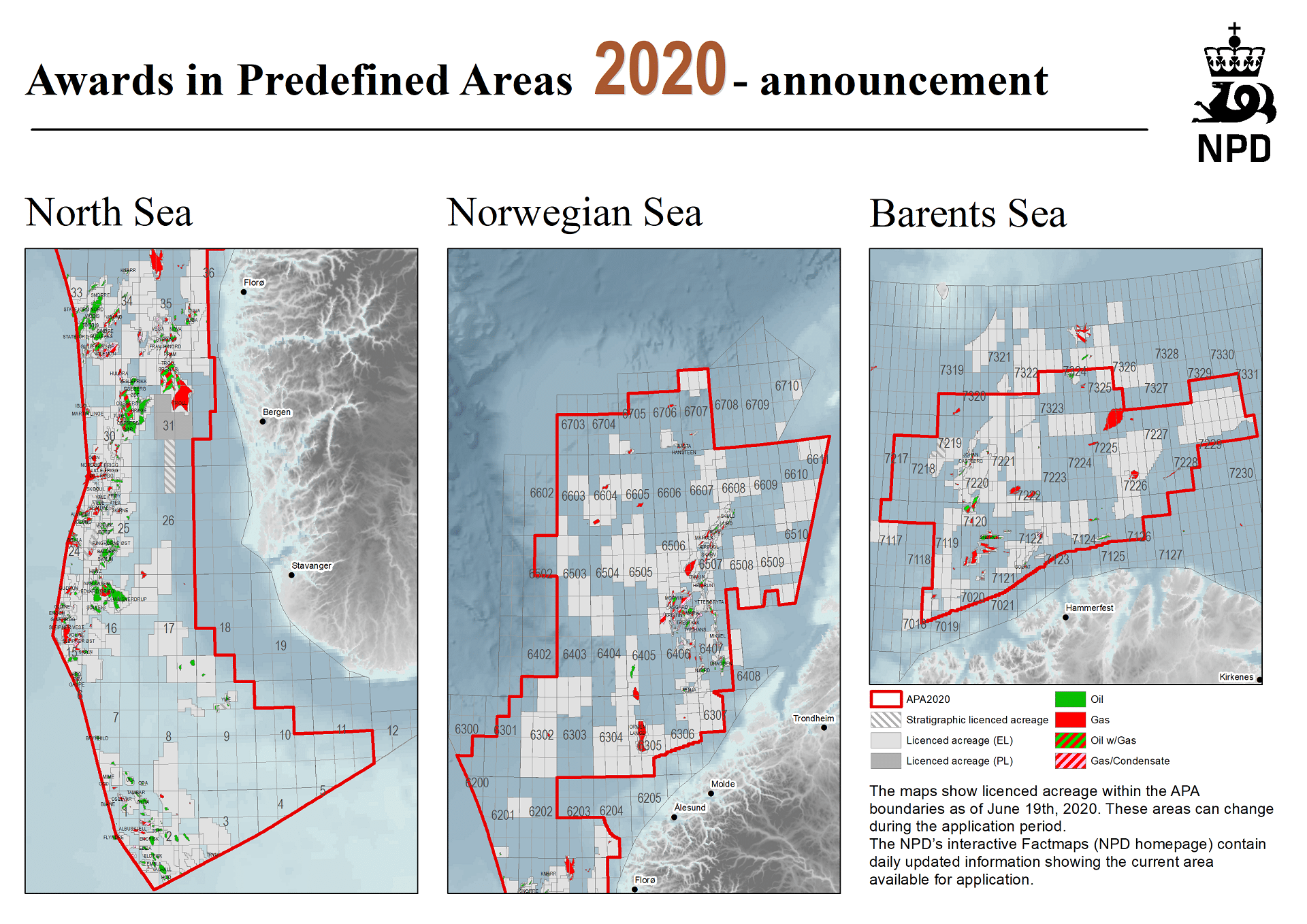On June 19, the Norwegian Ministry of Petroleum and Energy announced this year’s licensing round for the geological best known parts of the Norwegian continental shelf – APA 2020 (Awards in Predefined Areas 2020). This includes blocks in the North Sea, the Norwegian Sea, as well as the Barents Sea.
In APA 2020, according to established practice, an extension of the predefined area by 36 blocks west of the Norwegian Sea has been done.
It was already known that the new APA area in the Norwegian Sea would be expanded with new blocks in the Møre and Vøring basin and the outer parts with new margins and plateaus.
In the latest issue of the GEO magazine, you can read more about the potential for new, large discoveries in this underexplored and deep part of the Norwegian continental shelf (“På dypt vann” GEO 04/20).
— The Norwegian Government pursues a long-term, predictable petroleum policy. New discoveries are a prerequisite for long-term employment, value creation and government revenues. Regular licensing rounds on the Norwegian Continental Shelf are therefore a key element in our policy, says Norwegian Minister of Petroleum and Energy, Ms. Tina Bru (H).
In mature areas, new discoveries are important for achieving good capacity utilization in production and transport facilities and for good management of time-critical resources, the Government points out.
— The APA rounds include large parts of the open, accessible part of the Norwegian Continental Shelf. Even after decades of activity, there are still opportunities in these areas. Due to new technology and a multitude of new players, I believe we will see new discoveries in the areas available in this year’s APA round, Bru continues.
The deadline to apply for APA 2020 is Tuesday, 22 September 2020 at 12:00. Applicants are encouraged to submit in good time before the deadline. Awards are expected during the first quarter of 2021.
TEXT: RONNY SETSÅ





